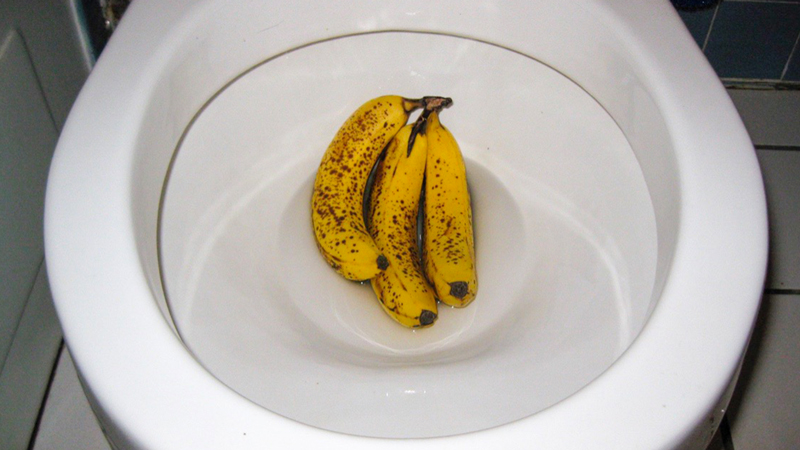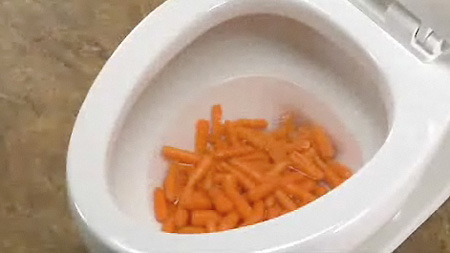Can You to Dispose of Food in the Toilet?
Can You to Dispose of Food in the Toilet?
Blog Article
In this article in the next paragraphs you can find a good deal of outstanding content relating to What Can Happen If You Flush Food Down the Toilet?.

Intro
Lots of people are usually confronted with the predicament of what to do with food waste, specifically when it pertains to leftovers or scraps. One typical inquiry that emerges is whether it's all right to flush food down the toilet. In this article, we'll explore the reasons people may think about purging food, the repercussions of doing so, and alternative approaches for correct disposal.
Reasons individuals might think about flushing food
Absence of recognition
Some individuals may not be aware of the prospective harm brought on by purging food down the bathroom. They may incorrectly believe that it's a harmless technique.
Comfort
Purging food down the toilet might look like a fast and easy solution to getting rid of unwanted scraps, particularly when there's no nearby trash bin offered.
Laziness
Sometimes, people might simply pick to flush food out of large laziness, without taking into consideration the effects of their actions.
Effects of flushing food down the bathroom
Environmental impact
Food waste that winds up in rivers can contribute to air pollution and harm aquatic environments. In addition, the water made use of to purge food can stress water resources.
Plumbing concerns
Purging food can result in blocked pipes and drains pipes, causing pricey pipes repair work and inconveniences.
Sorts of food that need to not be purged
Coarse foods
Foods with fibrous structures such as celery or corn husks can get entangled in pipelines and trigger obstructions.
Starchy foods
Starchy foods like pasta and rice can soak up water and swell, bring about blockages in pipelines.
Oils and fats
Greasy foods like bacon or food preparation oils must never ever be purged down the toilet as they can strengthen and create blockages.
Appropriate disposal approaches for food waste
Making use of a waste disposal unit
For homes geared up with garbage disposals, food scraps can be ground up and flushed via the plumbing system. Nonetheless, not all foods appropriate for disposal in this way.
Recycling
Particular food packaging products can be reused, lowering waste and minimizing ecological effect.
Composting
Composting is a green way to dispose of food waste. Organic materials can be composted and made use of to enrich soil for horticulture.
The value of appropriate waste administration
Minimizing environmental damage
Proper waste administration techniques, such as composting and recycling, help lessen pollution and protect natural resources for future generations.
Shielding pipes systems
By avoiding the method of flushing food down the commode, house owners can protect against costly pipes repairs and keep the integrity of their pipes systems.
Verdict
To conclude, while it might be alluring to purge food down the commode for convenience, it is necessary to understand the prospective repercussions of this activity. By taking on proper waste management practices and taking care of food waste responsibly, individuals can contribute to much healthier pipes systems and a cleaner atmosphere for all.
FLUSH FOOD DOWN THE TOILET?
FLUSHING FOOD CAN CAUSE BLOCKED DRAINS IN YOUR HOME
All of the plumbing fixtures in your home are connected to the same sewer pipe outside of your home. This outdoor sewer pipe is responsible for transporting all the wastewater from your home to the Council sewer mains. Even small pieces of food that go down the kitchen sink can cause problems for your sewer. It should therefore be obvious that flushing larger bits of food, such as meat, risks a clog in either the toilet itself or the sewer pipes. Flushing greasy food is even more problematic because oil coagulates when it cools, coating the interior lining of your pipes.
THE TOILET IS NOT A BIN
Food isn’t the only thing that people shouldn’t be flushing down the toilet. People use the toilet to dispose of all kinds of things such as tampons, makeup wipes, dental floss, kitty litter and even underwear. Water goes to great lengths to educate residents about the high costs and stress placed on wastewater treatment systems simply from people flushing the wrong stuff down the toilet. It costs taxpayers millions of dollars each year, and homeowners thousands in blocked drain repairs.
FLUSHING FOOD IS A WASTE OF WATER
Flushing food is a waste of our most precious resource - water. In June this year Level 1 water restrictions were introduced to protect water supply from drought conditions. Much of New South Wales continues to be affected by prolonged drought with recent figures revealing up to 97 per cent of the state remains in drought. Depending on whether you have a single or dual flush toilet, every single flush uses between five and 11 litres of water. In the current climate this is a huge amount of water to be wasting on flushing food that should be placed in the bin (or better yet, the compost).
https://www.jabplumbingsolutions.com.au/blog/can-you-flush-food-down-the-toilet

We are very eager about Think Twice Before Flushing Food Down Your Toilet and I really hope you enjoyed my blog post. Sharing is nice. Helping people is fun. Thank you so much for your time spent reading it.
Go Services Report this page